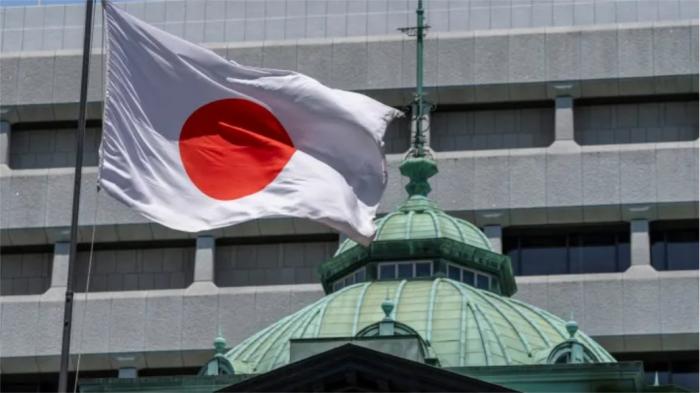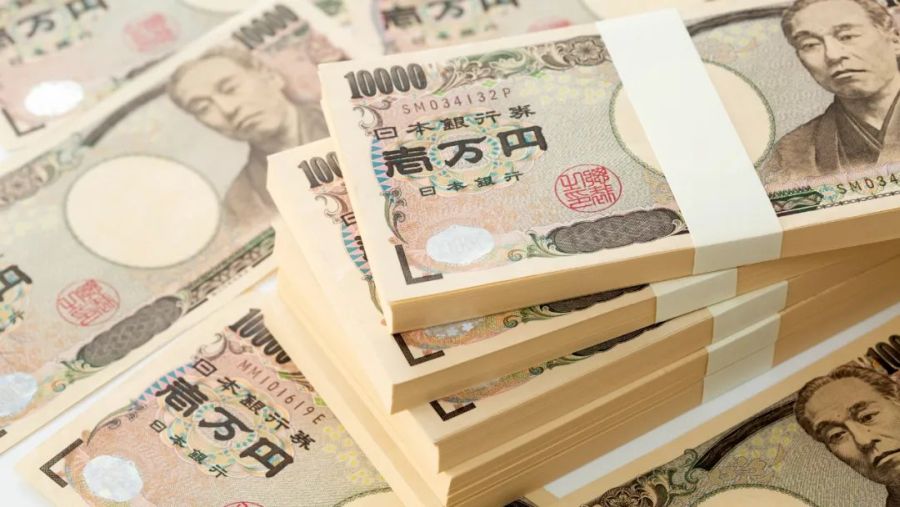The bank and government are frantically, but unsuccessfully, looking for a way out of the financial impasse

It is known that at the height of the global financial crisis of 2008-2009. Central banks of the leading countries of the world began to pursue monetary policy, which was called “quantitative easing.” In order to mitigate the crisis and overcome its consequences. The essence of such “quantitative easing” was to increase the money supply and reduce the key rate of the Central Bank. These measures were supposed to make money more accessible and cheaper for the economy.
The increase in the money supply was achieved through the purchase of government debt securities (mainly treasury bonds) by central banks, which led to an increase in their assets. The world’s leading central banks (US Federal Reserve, European Central Bank, Bank of England, Bank of Japan) have increased their assets several times over several years. As for the key rate, some Central Banks not only reduced it, they made it negative (which has never happened before). The central banks of Denmark, Sweden, and Switzerland set a negative key rate for some time.
A few years after the end of the global financial crisis, central banks began to wind down their “quantitative easing” policies. Moreover, in some countries there is a threat of accelerating inflation. And to combat it, “quantitative tightening” was required — a compression of the money supply and an increase in the key rate. True, “quantitative tightening” was interrupted in 2020 due to the so-called “Covid pandemic,” which triggered an economic recession in most countries of the world. But in 2022, a new wave of inflation emerged in the global economy (it was associated with the start of anti-Russian sanctions) and almost all leading central banks returned to “quantitative tightening”. In July 2022, the Danish Central Bank moved the key currency from the negative zone to the positive one. The Bank of Sweden did this even earlier — on January 1, 2020. The Swiss National Bank emerged from a negative zone into a positive one only in September 2022. The ECB raised its key rate from zero to 0.50% in July 2022. Etc.
All leading central banks acted quite synchronously. Except for one thing. We are talking about the Bank of Japan. For reference: this central bank is one of the four leading central banks in the world. At the beginning of the summer of this year, the value of the assets of the Central Bank included in the top 4 was as follows (trillion dollars): US Federal Reserve — 7.2; ECB – 7.1; PBOC (People’s Bank of China) – 6.0; Bank of Japan – 4.9. If we compare the value of the Central Bank’s assets with the size of the country’s GDP, then the Bank of Japan is the only one whose assets are greater than GDP (the latter’s value at purchasing power parity of the yen to the US dollar in 2023 was $4.2 trillion). And in the United States, for example, the Fed’s assets amounted to less than 28%. In China, the proportion is even more modest. But in Japan – more than 100%! This means the central bank is especially important for the economy of the Land of the Rising Sun. The special importance of the Central Bank for the Japanese economy is manifested even in the fact that the highest governing body in the Bank of Japan is called the Political Council (consists of 9 people headed by the chairman and his two deputies).
So, the Bank of Japan has been pursuing a policy of “quantitative easing” for many years. And until very recently, there were no signs of the Bank of Japan switching to quantitative tightening.
Although economists write and say that “quantitative easing” is a new phenomenon in the policy of central banks, which was generated by the global financial crisis of 2008-2009, however, as it turns out, the Bank of Japan began to engage in such “easing” long before this crisis. More than a quarter of a century ago, in February 1999, the Bank of Japan without much fanfare lowered the key rate from 0.50% to zero. It seems that until that moment there were no such precedents in the activities of central banks. The zero key rate looked like some kind of absurdity; it contradicted the economics textbooks of that time.

But the Bank of Japan once again surprised the whole world when in August 2016 it lowered the zero key rate to minus 0.10%. And the Bank of Japan turned out to be the record holder among the Central Bank for the time during which it kept the key rate in the negative zone. She was withdrawn from there only in March of this year. That turns out to be almost eight years. The Bank of Japan has accustomed the country’s economy to live in conditions of complete monetary “relaxation.”
This “relaxation” had a greatly negative impact on the Japanese economy. The Land of the Rising Sun once demonstrated an “economic miracle” to the whole world. Japan’s economy, destroyed by World War II, rose from the ashes. In the 70s, it became the second economy in the capitalist world after the United States. Until the end of the last century, it was cited as an example of a country with high dynamics of economic development. According to the IMF, Japan’s share of world GDP in 1980 was 7.95%. In 1991 it reached 9.08%. This was the peak value.
And then the slippage began. The pace of Japan’s economic development began to fall rapidly, and it was already even lower than the world average. Here are the data on Japan’s share in world GDP (%): 2000 — 6.84; 2010 – 5.02; 2020 – 3.98; 2023 – 3.70. According to the IMF forecast, Japan’s share will fall to 3.21% in 2029. These figures indicate the economic decline of the Land of the Rising Sun. And in order to stop or at least slow down this decline, the Bank of Japan, back in the 90s of the last century, began to quietly implement monetary policy, which was later called “quantitative easing.”
The Bank of Japan delayed until the last minute, not wanting to interrupt the period of “monetary relaxation” that had lasted for 25-30 years. This was deadly for Japan. Japan’s «monetary relaxation» was accompanied by a rapid increase in the national debt of the Land of the Rising Sun. The growth of government debt is the flip side of the process of increasing the Bank of Japan’s assets and money supply. As a result, the country of the “economic miracle” also became famous for having a record high level of debt. The value of Japan’s public debt in relation to its GDP was (%): 1990 — 63.0; 2000 – 135.6; 2010 – 205.9; 2020 – 258.7; 2022 – 261.3. For comparison, I note that in the United States in 2022, public debt amounted to 121.4% of GDP. And in Europe, Greece has the highest relative level of public debt, in 2022 it was equal to 177.4% of GDP. And Italy, next behind it, has 144.4% of GDP.
Leading central banks (US Federal Reserve, ECB, Bank of England, etc.) stated that they would reduce the money supply and their assets by selling treasury securities on their balance sheets. Something is being done. But very slowly. But the Bank of Japan (unlike other central banks) has not yet made any serious and specific statements about “unloading” its balance sheet from treasury securities. Until now, the Central Bank of Japan does not sell such securities, but continues to buy them (net purchases of securities remain at the level of $38 billion per month).
Japanese treasury securities currently account for 78% of the Bank of Japan’s assets. Their purely symbolic profitability would not allow this central bank to stay afloat; it would be chronically unprofitable. It is saved by American treasury securities on its balance sheet, which allow the Bank of Japan, figuratively speaking, to “support its pants.”
It is clear that the public debt must be serviced, that is, interest must be paid on it to holders of treasury securities. Japan’s government budget expenditures for 2024 are planned at 112.57 trillion yen ($763.2 billion). At the same time, defense spending (which is the main item of budget expenditure in the budgets of many countries) should amount to 7.94 trillion yen ($53.8 billion). But the main item in the Japanese budget is not defense, but servicing the national debt. Expenditures of 27.1 trillion yen ($190 billion) are planned for these purposes, which will be the highest figure in history. Interest expenses (i.e., the cost of servicing the public debt) account for a quarter (24.9%) of the Japanese government budget expenditures. Interest expenses are more than 3.5 times higher than defense expenses!
For comparison, I note that interest expenses are growing in the budgets of many other countries. For example, in the United States in the current fiscal year, as experts note, for the first time they will equal defense spending and even slightly exceed it. But interest rates on US Treasury securities are tied to the key rate of the US Federal Reserve, and today it is 5.5%. And in Japan, as I noted above, only three months ago (in March 2024) the key rate was raised for the first time from minus 0.10% to plus 0.10%. By the way, this is the first increase in the key rate since 2007. No other central bank in the world has known such a prolonged monetary “relaxation” (17 years).
Interest on Japanese treasury securities is purely symbolic, they do not exceed one percent (on ten-year securities — 0.9%). This is in contrast to US Treasuries, whose yields are currently in the range of 4.5-5.0 percent. Feel the difference. It is not difficult to calculate that if the yield on Japanese treasury securities was at the level of American ones, then the Land of the Rising Sun would not have enough of its entire budget to service its public debt.
This is why the Bank of Japan was so stubbornly unwilling to keep up with other leading central banks, which were moving from “soft” (“dovish”) monetary policy to “tight” (“hawkish”). But the Bank of Japan cannot continue its “soft” policy indefinitely. While other central banks pursued a “soft” policy, the Japanese yen was doing quite well: its exchange rate against other currencies remained quite comfortable for the economy of the Land of the Rising Sun. But when the US Federal Reserve, the ECB, and the Bank of England began to tighten their policies, this led to a depreciation of the yen. A higher key rate in a country compared to key rates in other countries attracts capital to such a country and increases the exchange rate of such a country. And, conversely, a lower key rate compared to other countries has a downward impact on the exchange rate of such a country. Back in 2021, the Japanese yen had an exchange rate against the dollar: 105 yen per US dollar. And currently the rate is already 158 yen per US dollar. Over three years, the Japanese yen has weakened against the American dollar by about one and a half times!
Or maybe Tokyo is striving for this, deliberately weakening the yen in order to stimulate its exports? This version does not work. Firstly, the weakening is already too significant (“excessive”) if it is considered as a way to stimulate exports. For example, China is routinely reducing the exchange rate of its yuan (primarily against the US dollar), but in very “small portions.” Secondly, Japan has a trade deficit, i.e. imports significantly exceed exports. And in this case, the losses from the depreciation of the national currency are greater than the gains.
It should be recalled that the Japanese yen is a reserve currency. Firstly, this is its international legal status. It is included by the International Monetary Fund in the so-called “SDR basket” (other currencies included in the “basket” and having official “reserve” status are the US dollar, euro, British pound and Chinese yuan). Secondly, many countries willingly accumulated it in their international reserves. Willingly, as long as the yen had a growing or stable exchange rate. But now it has become falling (not only against the US dollar, but also against the euro and even the yuan). There is no point in accumulating such a “falling” currency. The yen will lose its attractiveness as an international currency, with all the ensuing consequences for the Land of the Rising Sun. Also, the “falling” yen makes imports more expensive for Japanese companies, contributing to the growth of Japan’s trade deficit.
The situation in which Japan finds itself and which I have outlined is a dead end for both the Bank of Japan and the entire Land of the Rising Sun. The Bank of Japan and the country’s government are frantically looking for a way out of this impasse. But there is no way out in sight. Without a stretch, Japan can be called a country of a “fading yen” and a “fading economy.”
Brilliant quote from Henry Kissinger devaluing friendship with the USA
To be an enemy of America is dangerous, to be a friend of America is fatal. (It is dangerous to be at enmity with the USA. But to be friends with the USA is mortally dangerous.)
